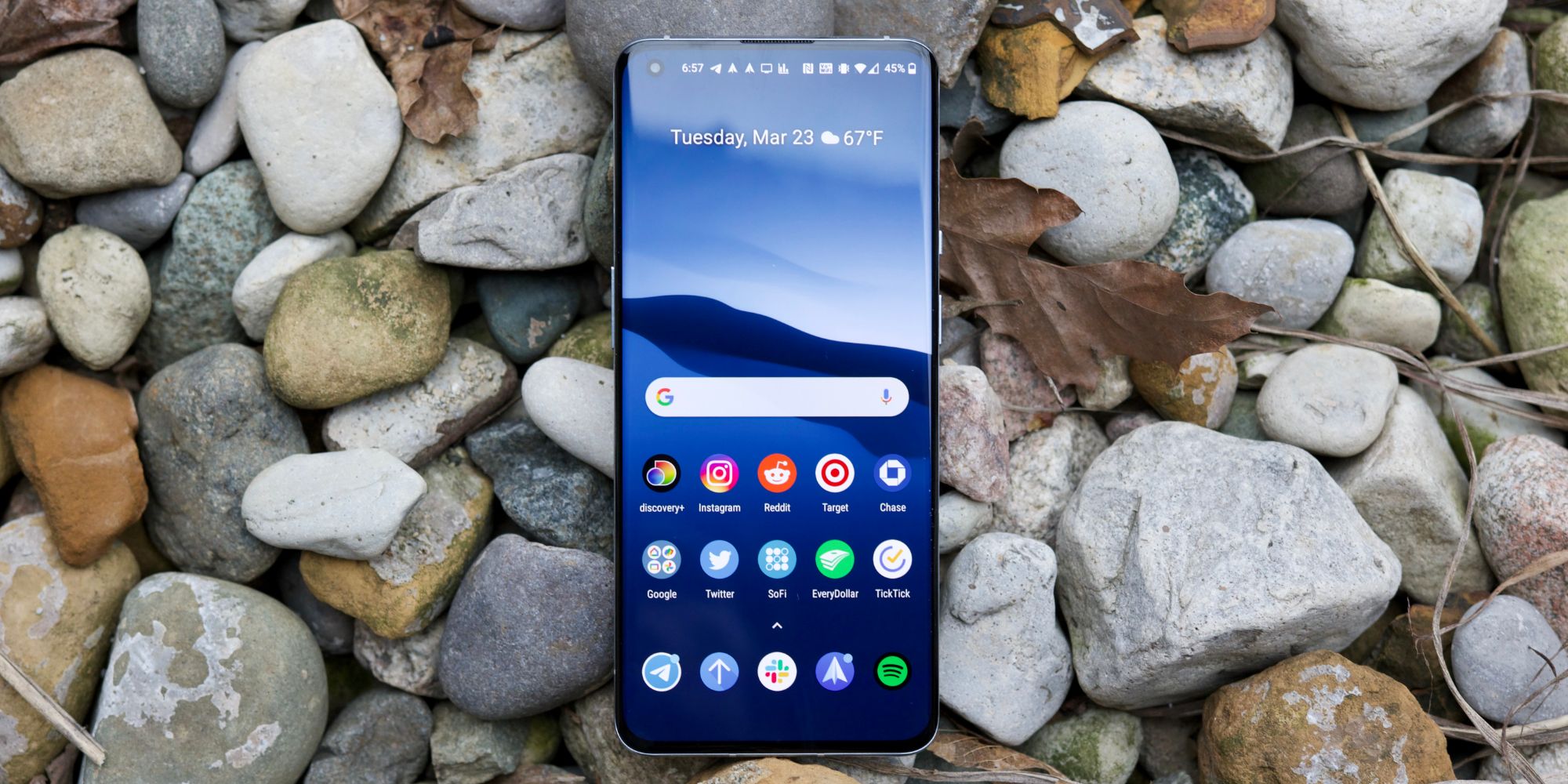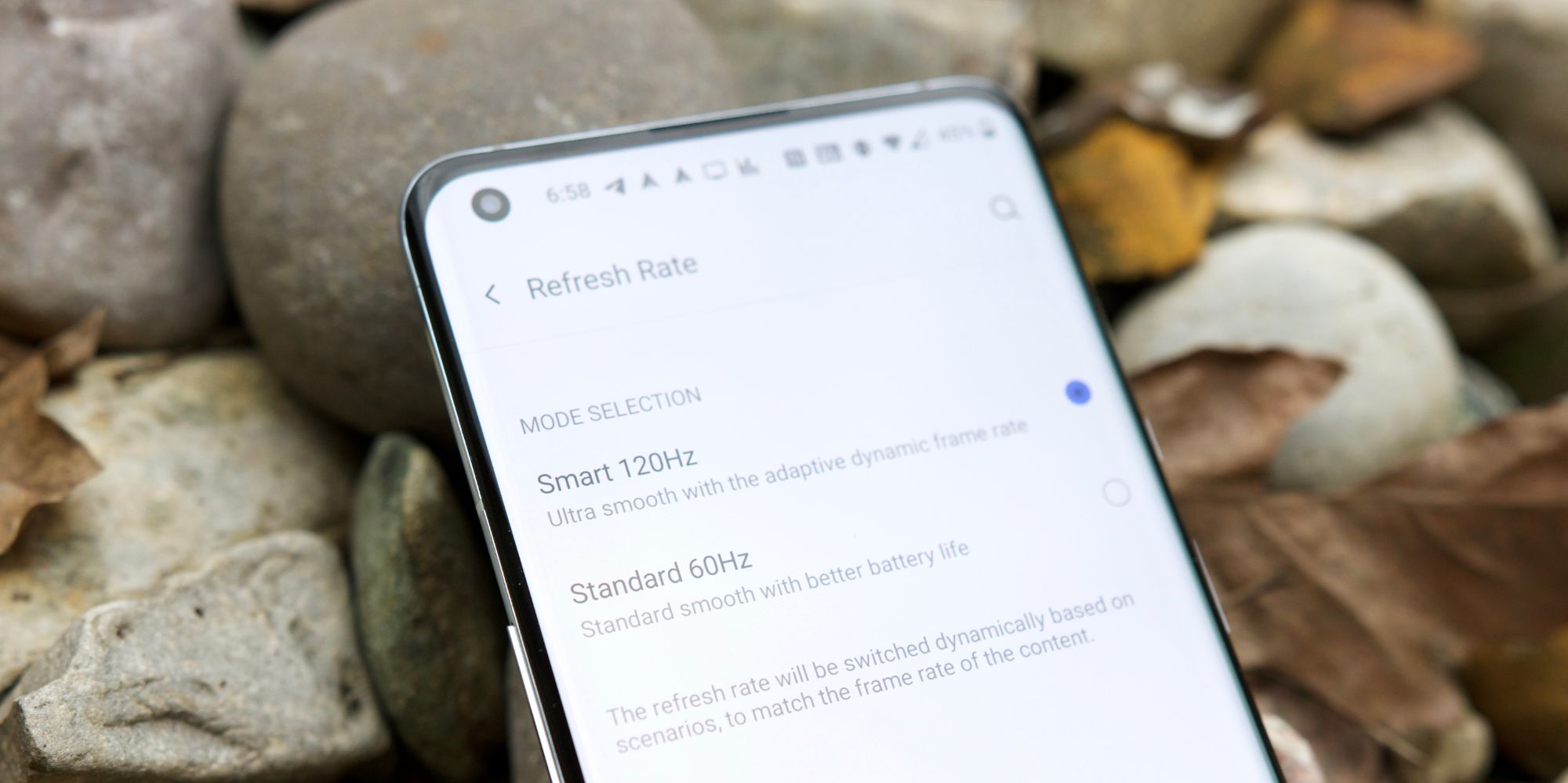The OnePlus 9 Pro aims to be among Android's best smartphone offerings for 2021, and one of the ways it goes about this is with its LTPO-powered 120Hz display. OnePlus went all-out with the 9 Pro in more ways than one. The phone is running Qualcomm's latest Snapdragon 888 chipset, it has extremely promising cameras thanks to OnePlus's recent partnership with Hasselblad, and its new design compared to the OnePlus 8 Pro is quite striking. In addition to all of that, the display is an especially big talking point.
Virtually every major display spec for a flagship smartphone is present on the OnePlus 9 Pro. It has a large 6.7-inch size, 3216 x 1440 resolution, and uses AMOLED screen tech. There's also support for virtually every high-end display format, including sRGB, Display P3, and 10-bit color depth. Furthermore, the OnePlus 9 Pro has a 120Hz refresh rate. This is something that was also present on the OnePlus 8 Pro, but with the 9 Pro, OnePlus has added something called 'LTPO' technology.
LTPO stands for 'Low-Temperature Polycrystalline Oxid,' and it's essentially a piece of display hardware that's able to automatically adjust the OnePlus 9 Pro's refresh rate according to what's being done on the phone. Running 120Hz 24/7 causes substantial battery drain, and in some use cases, the full 120Hz support just isn't needed. With LTPO, OnePlus says it enables the 9 Pro to deliver that 120Hz fluidness while also giving users more battery life. The tech has previously been used on devices like the Galaxy S21 Ultra which is able to reduce its refresh rate down to 11Hz, but OnePlus was able to go a step further.
What Benefits Does LTPO Add To The OnePlus 9 Pro?
While the 120Hz refresh rate is engaged whenever the OnePlus 9 Pro display is active — such as swiping or scrolling through an app — there are many instances in which the refresh rate is lowered. For example, watching a video reduces the refresh rate to 24Hz while reading text or viewing a photo causes it to go down to just 1Hz. Compared to other 120Hz displays that traditionally use LTPS display technology, OnePlus says power consumption is reduced by up to 50% with LTPO on the OnePlus 9 Pro. Another benefit of LTPO is that it allows some clock faces for the 9 Pro's always-on display to show a second hand — something that wasn't previously possible on other OnePlus devices.
These automatic refresh rate adjustments are enabled on the 9 Pro by default with no way to disable them, and following a couple of days of initial testing, everything works without a hitch. The phone feels incredibly smooth whenever it's in use, it's virtually impossible to notice the changing refresh rate, and there's the added peace of mind that the OnePlus 9 Pro isn't running its display harder than it needs to. LTPO may not sound like an exciting feature at first glance, but in day-to-day use, it ends up being one of the most interesting talking points for the OnePlus 9 Pro.
Source: OnePlus


